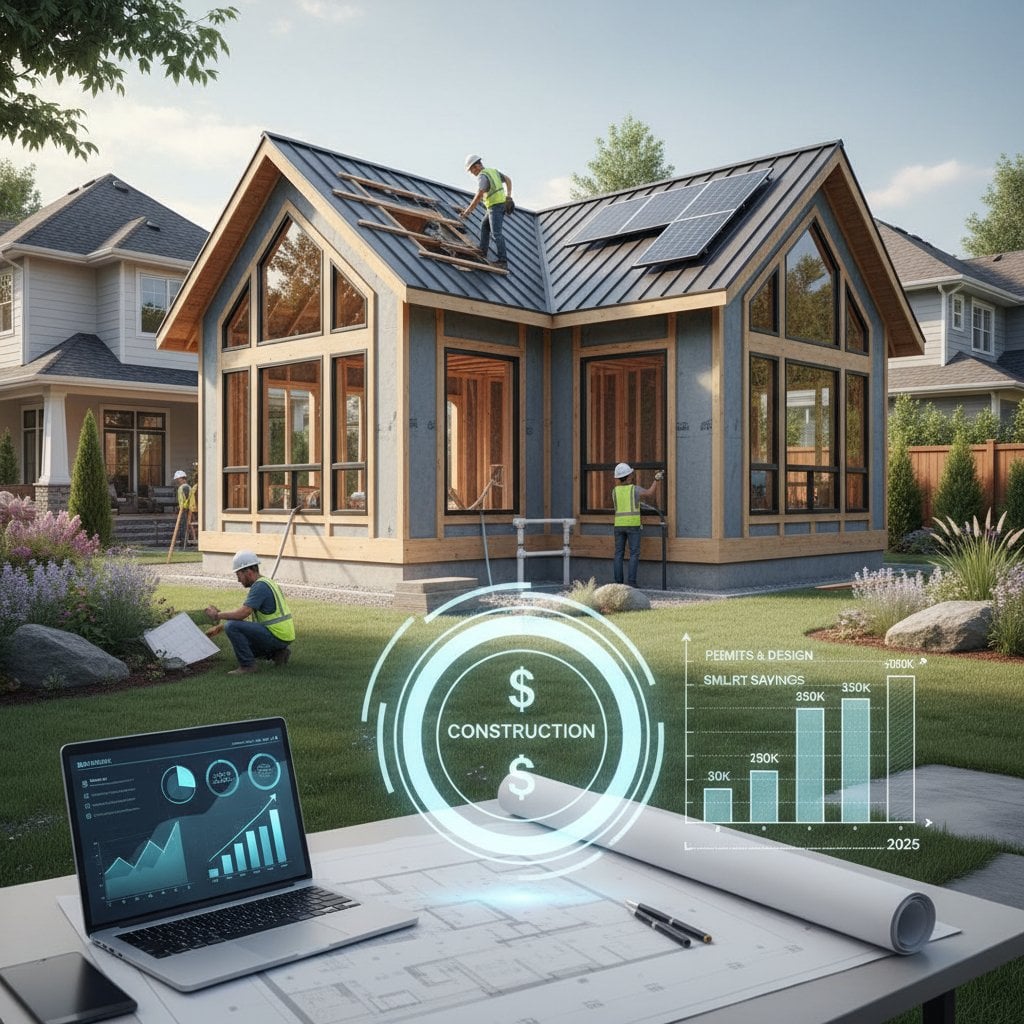2025 Multigenerational Home Costs: Layouts That Deliver Major Savings
Quick Cost Overview
Construction costs for a multigenerational home in 2025 range from $200 to $500 per square foot. This variation depends on factors such as the chosen layout, material finishes, and local labor rates. The average total cost for a complete project falls between $450,000 and $900,000. Incorporating an attached accessory dwelling unit (ADU) adds approximately $150,000 to $300,000 to the budget. Primary expenses stem from foundation size, duplicated plumbing lines, privacy enhancements, and the inclusion of multiple kitchens or bathrooms.
Essential Insights
- Incorporating a second suite or ADU proves more economical than constructing an entirely new, larger residence.
- Shared utilities and common walls minimize material usage and energy consumption.
- Adaptable floor plans enhance resale potential and decrease ongoing living expenses over time.
- Regulations on local zoning and permitting directly impact pricing and available design choices.
Costs Breakdown by Size and Configuration
A single-level plan featuring dual suites typically averages $250 per square foot. In contrast, a two-story design with independent entrances may climb to $400 per square foot due to increased structural complexity. For conversions of existing homes, budget an extra $80,000 to $150,000 to develop a distinct living space complete with its own bathroom and kitchenette. This approach often involves reinforcing walls and rerouting utilities to ensure compliance with building codes.
Attached ADUs generally incur lower costs compared to detached versions. Detached units demand separate foundations, roofing systems, and utility hookups, which can increase the project total by $40,000 to $60,000. Opting for an attached configuration allows seamless integration with the main structure, reducing both construction time and expenses while maintaining aesthetic cohesion.
Labor and Contractor Expenses
Labor constitutes 35 to 45 percent of the total budget in most projects. Licensed contractors charge between $70 and $150 per hour, with rates influenced by geographic location and the intricacies of the build. Plumbing and electrical installations represent the highest professional service costs, particularly when separate systems are required for each living area. To mitigate these expenses, consider designs that consolidate utility runs where possible.
Engaging a general contractor streamlines the coordination of subcontractors, scheduling, and permit acquisition. Homeowners might handle small-scale remodels independently, but comprehensive multigenerational builds necessitate expert supervision. Professionals ensure adherence to safety codes, structural integrity, and energy efficiency standards, preventing delays and rework.
Influential Cost Elements
Choices in materials influence both initial outlay and daily comfort levels. Shared kitchens and bathrooms substantially lower costs by avoiding redundancy, whereas fully private suites elevate expenses through additional fixtures and space. Investments in soundproofing, enhanced insulation, and accessibility modifications, such as wider doorways or ramp installations, add $10,000 to $30,000 depending on the overall floor plan and customization needs.
Permitting fees fluctuate widely, with local authorities assessing $2,000 to $10,000 based on project square footage and zoning classifications. Incorporating energy-efficient features, like centralized HVAC systems, may increase upfront spending but yield significant savings on utility bills. Evaluate long-term benefits, such as reduced maintenance and improved indoor air quality, when selecting these upgrades.
Strategies for Cost Reduction
- Consolidate utilities and walls. Attached designs require fewer building materials and simplify installations.
- Leverage existing foundations. Transforming garages or basements shortens timelines and avoids new groundwork.
- Opt for streamlined kitchens. A compact kitchenette over a full setup saves $15,000 to $25,000 in appliances and cabinetry.
- Apply uniform finishes. Consistent selections for flooring, countertops, and fixtures across spaces enable bulk purchasing and minimize waste.
- Prioritize modular components. Prefabricated elements for walls or cabinetry accelerate assembly and cut labor hours.
Investment Returns
A thoughtfully planned multigenerational home yields a return on investment of 50 to 70 percent. This value derives from versatile living arrangements and opportunities for rental revenue from secondary units. Properties equipped with such features attract diverse buyers, including extended families or investors, and often command premium prices in competitive markets. Moreover, these homes support aging in place, reducing future relocation costs for owners.
Balancing DIY Efforts with Professional Expertise
Do-it-yourself methods suit cosmetic enhancements, such as applying fresh paint, installing new flooring, or assembling basic cabinetry. These tasks allow homeowners to personalize spaces without extensive skills. However, structural alterations, plumbing reroutes, or electrical modifications demand licensed specialists to avoid hazards and ensure code compliance.
Pursuing a DIY strategy can trim 10 to 20 percent from the budget through direct labor savings. Yet, errors in execution or inspection failures may lead to expensive corrections. Consult local experts early to identify feasible DIY portions and secure necessary approvals.
Basis for Cost Estimates
These figures draw from national contractor quotations, regional pricing databases, and surveys of recent homeowners. Projections account for mid-grade materials and conventional labor rates, excluding high-end customizations or premium appliances. Actual costs may vary; obtain site-specific assessments for precision.
Planning for Long-Term Success
Start by mapping out your floor plan and assessing privacy requirements for each household member. Solicit bids from several licensed builders to compare approaches and timelines. Weigh attached ADUs against detached ones based on your property constraints and future needs. Such deliberate planning transforms multigenerational living into a sustainable, cost-effective arrangement that strengthens family bonds and financial stability.










